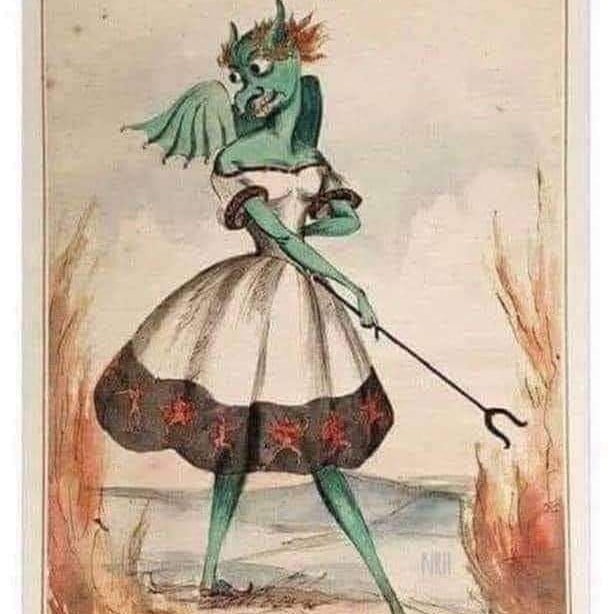Recently learned this. Back in the day, women brewers would make beer in big cauldrons at the market place, wear big pointy hats so the customers could spot them easily, and had cats to chase away the mice that ate the raw materials. When monasteries started brewing beer they suddenly discovered that the women who were their competition were also WITCHES!!!
I wonder if that’s actually true, but I don’t want to know it isn’t
A bit searching confirms this. Turns out brewing beer was considered women’s work originally, something done between taking care of the kids and making dinner.
Women were in general accused of being a witch because they did most of the child care, sick care and other jobs concerning people. If somebody died, and lots of people died of disease, bad hygiene and so on, they sometime blamed the nanny or nurse and called her a witch that cursed them. Men usually worked with inanimate things or animals where chances of being called a witch were much lower.
People are fucking idiots
History of the world condensed in one statement.
“Alewife” was the term for a female brewer, a common enough term that there’s still a subway stop in metro Boston named Alewife.
If I had to guess, I’d say that the name in Boston comes from the fish, given the area’s maritime heritage. But the name of the fish probably came from their resemblance to the brewing ale-wives.
Did not know that, thanks.
Now do Braintree. 😄
If only I knew! 😀 I’m from Wisconsin, and know about alewives (the fish) because they’re invasive in the Great Lakes, where they die off seasonally and wash ashore in large, stinky masses.
If it plays into your biases then it’s probably true.
Just the confirmation I was looking for.
A cute just-so story, but i’d bet it’s more complicated than that.
Sounds about right for every locally dominant organized religion.
(edit) the original comment, I mean. Not the reply.
I doubt you’d be boiling the wort at a marketplace, even for small beer you’re looking at a week or more of ferment.
Selling it from a tun at the market, having a characteristic dress (and probably call), is very consistent with European retail traditions. “Fishwives” were famous for their shrill, sharp calls for example.
The modern equivalent I guess is the ice cream truck; they pretty much all have the same livery and play the same recorded organ tunes. Just imagine that approach for every product category.
deleted by creator
That art style is fantastic
YES.





